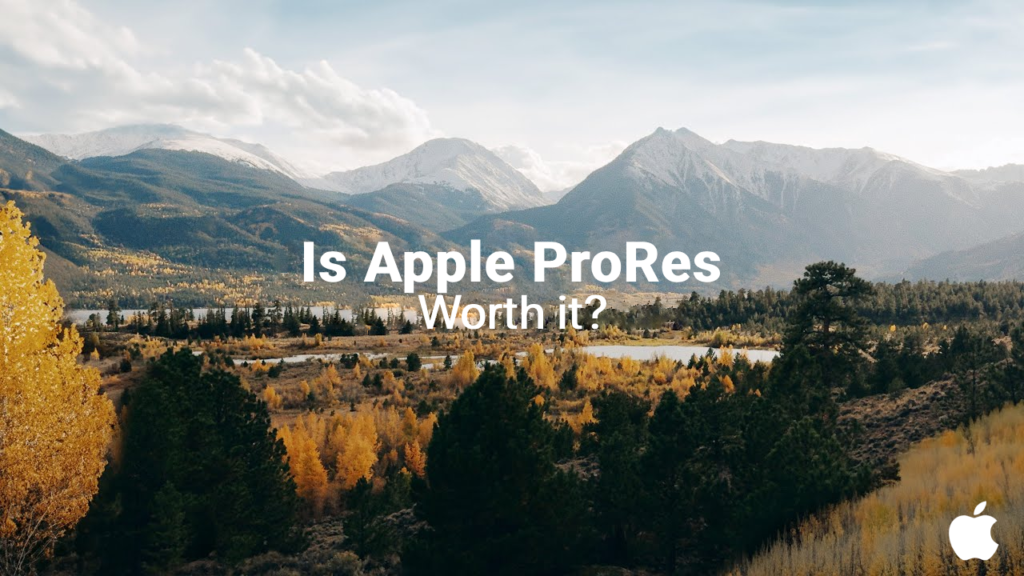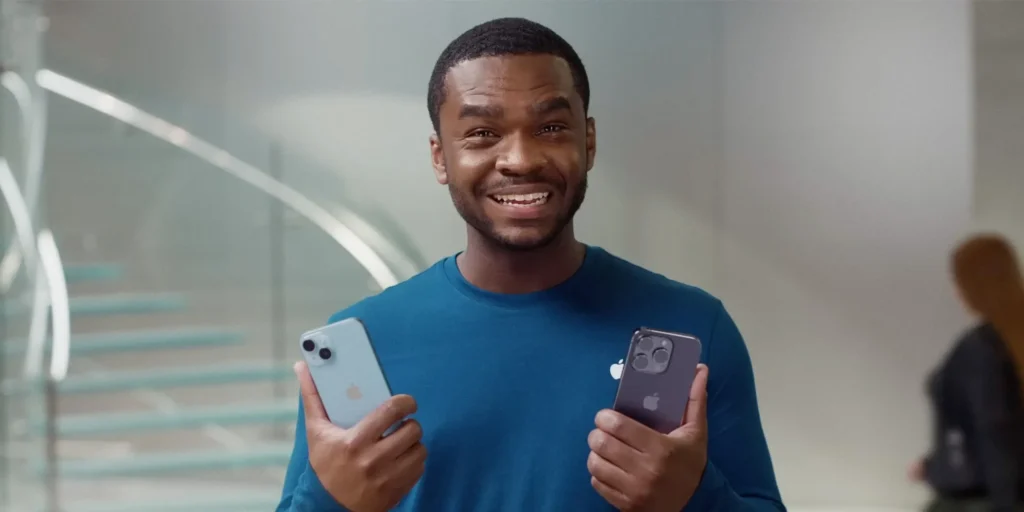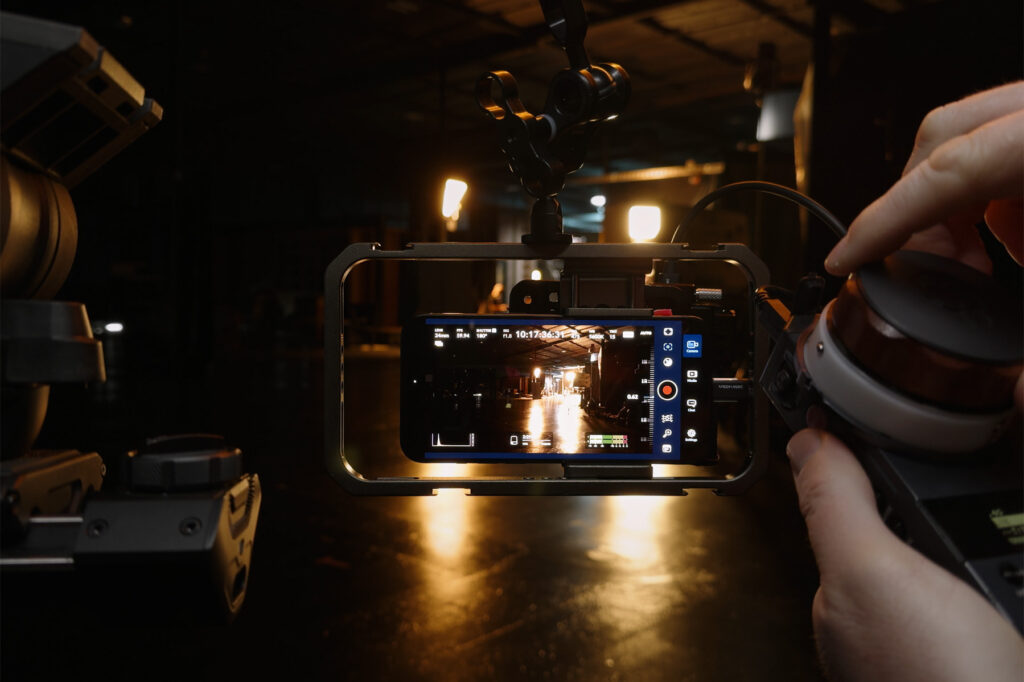
When considering whether to use Apple ProRes, a key question arises: is Apple ProRes worth it? The answer depends on who you are—casual user, content creator, or professional filmmaker—and how you plan to use this advanced video codec. Here’s a detailed guide to help you decide.
What Is Apple ProRes?
Apple ProRes is a video codec designed to retain more detail, dynamic range, and color depth than standard formats like H.264 or HEVC. First introduced to iPhones with the iPhone 13 Pro, this feature has evolved to include ProRes Log profiles on the iPhone 15 Pro and 16 Pro.
ProRes comes in different variants:
- ProRes Proxy: The lightest option, designed for lower file sizes.
- ProRes 422 HQ: Offers exceptional quality but generates significantly larger files.
- ProRes 422 and 422 LT: Mid-range options balancing quality and file size.
Changing between ProRes variants is not natively available on iPhones yet. However, you can easily switch variants using the Blackmagic Camera app, which provides greater control over settings than the default iPhone Camera app.
Pros and Cons of Apple ProRes
Advantages:
- Superior Quality: ProRes captures more detail, richer colors, and higher dynamic range than standard video formats.
- Professional Editing Flexibility: It’s ideal for post-production, enabling advanced color grading and fine-tuning in apps like DaVinci Resolve or Final Cut Pro.
- Cinematic Potential: ProRes with Log profiles unlocks cinematic visuals, providing excellent highlights and shadow retention.
Disadvantages:
- Large File Sizes: Even the lightest variant, ProRes Proxy, consumes significant storage (~1GB per minute at 4K 30fps). Higher variants like ProRes 422 HQ can use up to ~6GB per minute.
- Post-Production Required: Neither Raw nor Log ProRes footage look polished right out of the camera. To achieve its full potential, you need to edit and grade it in professional software.
- Resource-Intensive Workflow: From capturing to editing, using ProRes demands significant storage and processing power, which can be overwhelming for casual users.
Understanding these trade-offs is crucial to determining whether ProRes fits your specific needs.
How Apple ProRes looks before and after?
Before Image credit: Christian Grab – Shot on iPhone 15 Pro 4K (edited by me)If you want to learn how to edit Apple ProRes Log click here for a quick guide explaining how I edit photos like this.
How Much Storage Does ProRes Use?
To decide is Apple ProRes worth it, understanding its storage requirements is essential. ProRes video files are significantly larger than those in standard formats:
- ProRes Proxy: ~1GB per minute at 4K 30fps.
- ProRes 422 LT: ~2GB per minute at 4K 30fps.
- ProRes 422: ~4GB per minute at 4K 30fps.
- ProRes 422 HQ: ~6GB per minute at 4K 30fps.
Keep in mind that higher frame rates, such as 60fps, will generate even larger files.
Do You Need an External SSD?
For most ProRes modes, shooting 4K 60fps requires an external SSD due to the iPhone’s internal storage limitations. However, there are some exceptions:
- ProRes Proxy: Can record 4K 60fps without an SSD, but its quality may be inferior to H.264.
- Other ProRes Variants: If you have an iPhone with more than 128GB of storage (iPhone 15 Pro and 16 Pro), you can record 4K 60fps without an external SSD. However, on models with 128GB storage, an SSD is required. The iPhone 15 Pro Max and 16 Pro Max come with 256GB of base storage, so they do not face this limitation.
While an external SSD isn’t strictly necessary for casual users or lower frame rates, it’s highly recommended for those shooting in higher resolutions or frame rates to ensure smooth recording.
Is Apple ProRes Worth It for Casual Users?

For casual users, the answer is: probably not.
While ProRes offers professional-quality video, the trade-offs are significant:
- Large File Sizes: Managing 1GB–6GB per minute can overwhelm your storage.
- Editing Requirement: ProRes files demand post-production for full quality, which casual users may find cumbersome.
However, for special occasions like weddings or vacations, ProRes can preserve memories in exceptional detail.
Is ProRes Worth It for Content Creators and Enthusiasts?

For creators and enthusiasts, the answer is: yes, in many cases.
ProRes offers:
- Advanced Editing Flexibility: Enables detailed color grading and adjustments in apps like Final Cut Pro or DaVinci Resolve.
- Professional Results: Content recorded in ProRes looks sharper and more polished, ideal for YouTube or Instagram.
- Creative Freedom: Log profiles allow for cinematic effects, giving your videos a distinctive look.
However, creators must balance storage demands and editing complexity. Using ProRes Proxy for high frame rates is an option, but its lower quality might not meet expectations.
Is Apple ProRes Worth It for Professionals?

For professionals, the answer is: absolutely.
ProRes is tailored for those who:
- Create High-End Content: Its detail and color flexibility make it perfect for ads, short films, and documentaries.
- Need Workflow Efficiency: ProRes integrates seamlessly with professional editing software like DaVinci Resolve and Final Cut Pro.
- Shoot Cinematic Footage: The Log profile enhances dynamic range and enables Hollywood-level color grading.
Using an external SSD for 4K 60fps ensures smooth workflows and the best possible quality.
Which ProRes Should You Use?
Choosing the right ProRes depends on your needs and how you plan to use the video. Here’s a quick recommendation to help you decide:
ProRes Proxy: Not Recommended
ProRes Proxy is the lightest format, but it’s not recommended for most users. While it takes up less space than other ProRes formats, it still results in significantly larger files compared to H.265 (HEVC). Additionally, Proxy tends to exhibit more compression artifacts, which can reduce visual quality.
Although it’s easier to denoise, like all ProRes variants, Proxy doesn’t make up for its downsides. Recommendation: Only recommended for those who want to try this feature for the first time.
ProRes 422 LT: The Best Option for the Best Balance
ProRes 422 LT strikes the perfect balance between quality and file size. It provides slightly better quality than H.265 and is much easier to work with in editing. If you’re color grading or applying noise reduction, 422 LT is an excellent choice. It’s the best option for content creators and enthusiasts who want high-quality video without overwhelming storage.
Who should use it?
- Content creators and enthusiasts looking to elevate video quality without overwhelming storage.
- Normal users who don’t need professional-level quality but want a high-quality option for more elaborate videos like vlogs or home movies.
ProRes 422: For Those Who Prioritize Quality
ProRes 422 offers superior quality to 422 LT, with more detail and color fidelity. However, the resulting file size is larger. If you’re looking for a step up in quality and are comfortable with larger file sizes, 422 could be the ideal choice.
Who should use it?
- Content creators and enthusiasts who are ready to handle larger files but want a significant quality improvement without opting for heavier formats.
- Intermediate professionals who need a good balance between editing and storage, such as videographers and semi-professional video editors.
ProRes 422 HQ: Ideal for Professionals Who Demand the Best
ProRes 422 HQ provides the highest quality among ProRes formats, but the increase in file size is substantial. The quality difference between 422 and 422 HQ is minimal for most people, so the larger file sizes aren’t worth it unless you’re working on top-tier projects.
Who should use it?
- Professionals who need the highest standard of quality for film productions or projects where the final quality is paramount, such as indie films or high-end commercials.
Summary of who should use each ProRes variant:
- Normal users: For home videos with basic editing and moderate storage needs, ProRes 422 LT is the best choice.
- Content creators and enthusiasts: For YouTube videos, vlogs, or any content that requires good quality and easy editing, ProRes 422 LT offers a great balance between quality and editing ease.
- Professionals: If you’re aiming for the highest quality possible, ProRes 422 HQ may be useful, though ProRes 422 is often the most balanced choice for professional projects.
Final Verdict: Is Apple ProRes Worth It?
- For Casual Users: Likely not, unless you’re capturing once-in-a-lifetime events.
- For Enthusiasts and Creators: Yes, if you invest in storage and editing tools.
- For Professionals: Definitely, as it transforms your iPhone into a true cinematic tool.
Boost Your Workflow
ProRes is an amazing feature, but a reliable network is just as essential for uploading those massive files. Check out our article “WiFi 5 vs WiFi 6 vs WiFi 6E: What You Need to Know in 2025“ to learn how to choose the best WiFi technology for your ProRes needs!



It is appropriate time to make some plans for the future and it is time to be happy. I have read this post and if I could I want to suggest you few interesting things or suggestions. Perhaps you could write next articles referring to this article. I desire to read even more things about it!
Thank you for another informative web site. The place else could I am getting that type of info written in such a perfect manner? I’ve a undertaking that I’m just now working on, and I’ve been on the glance out for such information.
Thank you for your articles. I find them very helpful.